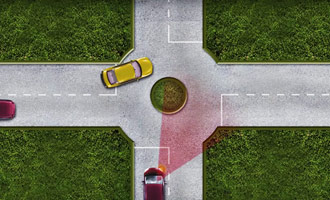
The Highway Code in New Zealand.
Please contact us and we will help you to organize your trip! It's free and without commitment.
- Read the post
- Details
- Advices
Presentation.
- 1The Country Where Traffic Jams Do Not Exist!
- 2How to Get an International Driving License?
- 3Driving in New Zealand
- 4Left-Hand Driving for Beginners.
- 5How to Plan Your Itinerary?
- 6How to Manage Your Gasoline Budget?
- 7Radar and Fines in New Zealand.
- 8The Essential Safety Rules.
- 9Practical Tips Before Driving.
The Country Where Traffic Jams Do Not Exist!

People drive on the left in New Zealand.
If you come from the United Kingdom, Australia, or any other country where people drive on the left side of the road, you don't need advice to rent a vehicle in New Zealand. There are, of course, some specificities, and I advise you to read only the parts that interest you. However, if you are not familiar with left-hand driving, you should read every single word of this article!
Same logic applies to the driving license. If you come from an English-speaking country, you can drive with your driving license, while travelers from other nations must apply for an international driving license. Here again, if you are not concerned, you can skip the chapter entirely.
Driving in New Zealand is done on the left side of the road, as in England, with a steering wheel positioned on the right and a second passenger who finds himself seated where the driver is usually installed!
Your future trip to New Zealand is fast approaching, and the prospect of driving left starts to give you cold sweats? You imagine inverted commands and you start to panic at the thought of damaging the car...
I have already gone through this, and I will explain how you will deal with this new situation!
Don't worry, the disorientation lasts for a moment only ... If the pedals are on the right in the cockpit, they are fortunately arranged in the same order as in the rest of the world, with the accelerator on the right, the brake in the middle and the clutch on the left. There is no risk of errors, although I recommend renting a car with an automatic transmission as we will see later.
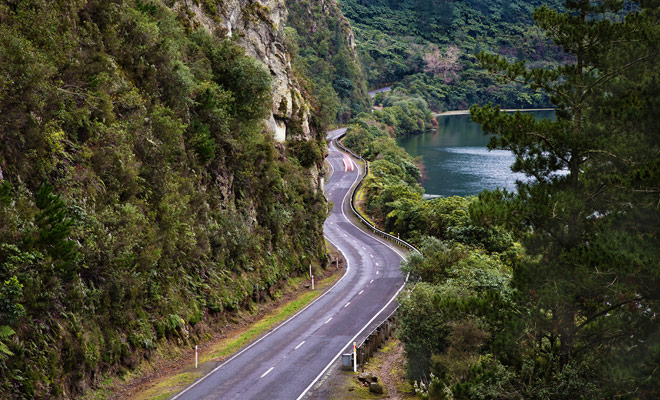
New Zealand has virtually no traffic jams.
One should not minimize the time of adaptation to develop new driving reflexes, however, one should not exaggerate the difficulties either.
Especially since the problems are not necessarily where they are expected! Those most feared (notably the roundabouts) are easy for the vast majority of travelers.
For my part, I admit preferring driving in New Zealand to that in Europe, for example.
Mostly because traffic is low in the country, with an excellent road network. You often feel like driving in a car commercial on TV!
I will not drive in your place, but you can count on me to share my experience, and give you advice about the New Zealand Highway Code specificities.
This practical guide will cover administrative formalities, safety instructions and even the gasoline budget. This New Zealand driving guide will be followed by other guides dedicated to the car or motorhome rentals.
But we will start by the most essential problem: the international driver's license which can be required if you come from a non-English-speaking country.
How to Get an International Driving License?
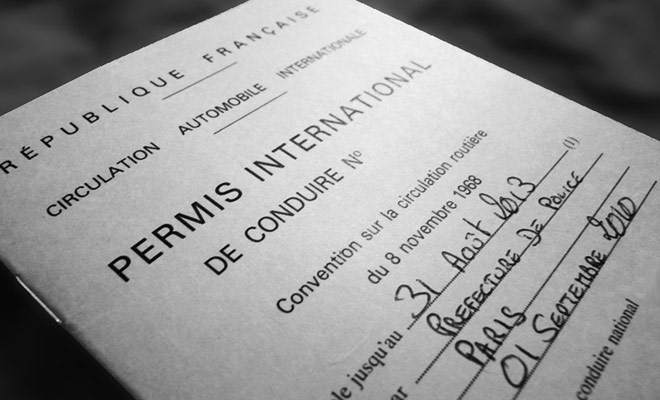
International driving licenses may be required.
If you do not come from an English-speaking country, your national driving license is not sufficient to drive in New Zealand, and you need an international license to be able to rent a vehicle. Don't worry, obtaining the precious document is a simple administrative formality without examination, at the express condition, however, not to wait until the last minute to take care of it!
Issued free of charge or for a small fee, the international permit is just a simple translation into English of your national permit.
Do not believe those people saying that you can drive without this license in New Zealand. The international driving license is mandatory to rent a vehicle, and its absence exposes you to a fine in case of control on the road.
To obtain this driving license which is valid for three years, you must apply for it, and each country will grant it according to its own rules.
Delay to Get a Driver’s International License.
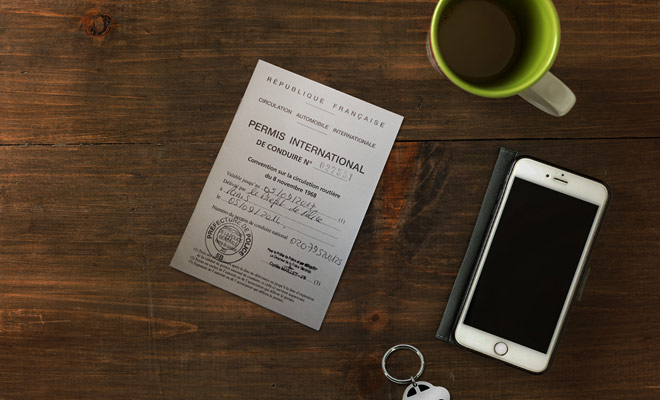
Do not wait the last minute to apply for an international driving license.
By mail, the average time to obtain an international driver's license varies between one to three weeks! Do not wait until the departure or you won't have enough time left to repeat the procedure if the mail get lost, or if the application is refused for any reason.
Each driver must have its own international driving license.
The international driving license is personal and can not be shared with another person (even from your own family). It is imperative to send a separate application per driver, and if possible by separate mail. So, if one of the mail gets lost (or is refused),and another is accepted, one of the drivers could at least rent a car and drive in New Zealand!
If You Forget the International Driver License.
If you have waited until the last minute, or have discovered the existence of the international driving license by reading these lines too late, you are in trouble, but fortunately there are two other solutions to be in good standing in New Zealand.
Have Your License Translated by a Professional.
The first method consists in having a translation of your national driving license carried out by a translator approved by the National Transport Agency of New Zealand. The list of professional translators is available at this address, and the process costs an average of $50. And contrary to the international driving license which is valid for three years, the basic translation expires after a single year.
Ask Your Embassy to Certify Your Driver’s License.
The other method (unknown to most travelers) is free, but assumes you are already in New Zealand, and is not valid for every country.
It is sometimes possible to ask the help from your consular section or your Embassy in New Zealand. There are models documents for translating the driving license to be printed and completed.
Then your should ask for a meeting at your consulate orembassy (it is rare to be able to do the whole procedure by mail or email). Do not forget your translation, your national driving license and another piece of identification (ID, passport...).
You will then be issued a special international driving pass and you will be able to take the road. Once again, this method is not always available, so please double-check first!
Driving in New Zealand
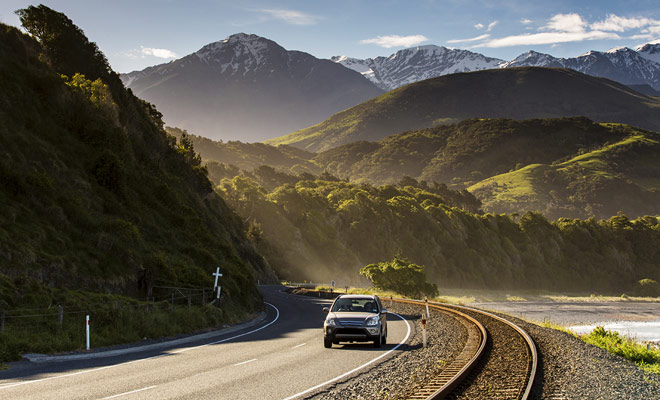
Driving is done on the left but the priority on the right applies.
Si la conduite se fait à gauche en Nouvelle-Zélande, la priorité demeure à droite et les panneaux affichent des limitations de vitesse ayant le kilomètre pour unité et non des miles.
You will not be completely disoriented and you will have time to scrutinize the road because the maximum speed is set at 50 km / h in town and 100 km / h outside built-up areas (only 90 km / h for motorhomes).
The main obligations that drivers have to observe are identical to those imposed almost everywhere in the world: compulsory seat belt use, prohibition under penalty to make phone calls while driving (hands-free kits should also be banned soon if it is not already done).
On the other hand, if the Highway Code respects the international signage, there are local specificities you should discover before departure.
But don't worry, I'm going to explain everything in detail.
Road Signs.
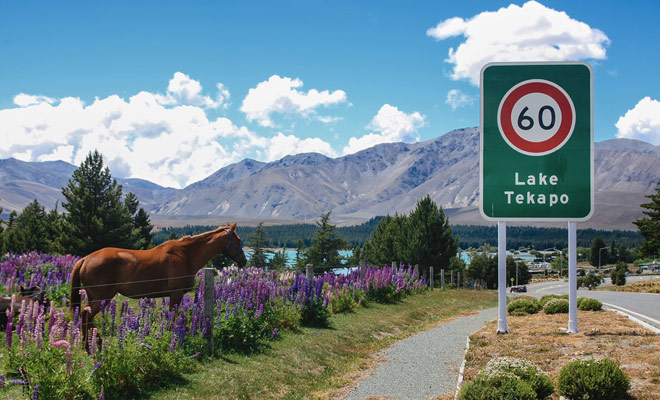
The speed limitation is expressed in kilometers.
The yellow color replaces the white often used in Europe for marking on the ground, and the signage is very present (perhaps even more than in Europe). The speed signs are remarkably accurate, and if a turn is advised at 80 km / h, you should not take it at 85 km / h!
The country-specific panels are triangular on a yellow background. As a matter of principle, you should always raise your foot when you see one, because they always announce a danger. Some lend to smile (warning penguins, kiwis ...) but they are to be considered seriously.
Even the most unlikely signs (like the crossing of penguins) are to be taken seriously!
In addition, temporary signage is common in a country where the economy still depends heavily on agriculture. Many panels on the side of the road announce in advance the passage of a herd of sheep that will stop the traffic during long minutes. It is then necessary to be patient!
Types of Roads in New Zealand.
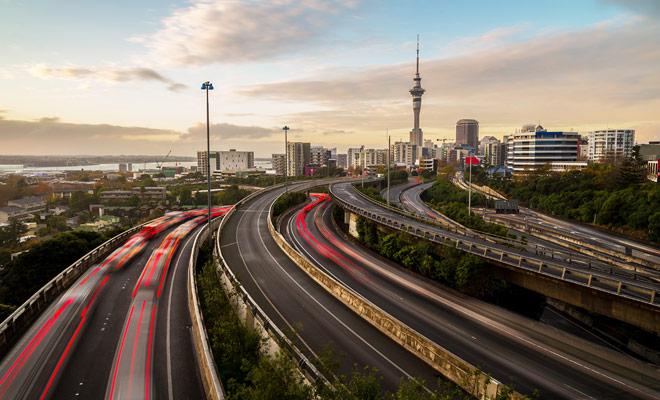
The country's highways are close to major cities.
With a speed limit fixed at 100 km / h, people who are used to drive faster in their own country can easily speed up and collect fines.
If you have a GPS, I recommend that you activate an audible alert if the maximum allowed speed is exceeded inadvertently.
New Zealand has only a few motorways also known as “ freeways ” and which are in the periphery of large urban areas.
These are the few places where traffic jams can occur at peak hours which correspond to office hours (8-9 am and 5-6 pm).
SPEED HIGHWAYS (SH)
The rest of the country is covered by Speed Highways (SH abbreviation) which are not highways as their name might suggest, but two-lane reverse roads, without median.
The 100 km/h speed limit also applies! Such narrow roads impose increased vigilance from the driver, especially in areas where the route is constantly winding as in Queenstown or Rotorua

Speed highways are not real highways.
Because of the tormented relief, the visibility is sometimes null in the corners and I recommend using the headlights even during the day to signal your presence.
New Zealanders are not used to honk on mountain roads to announce their presence as in Europe, so be careful and reduce your speed.
SEALED ROADS
The countless “sealed road” allow two vehicles to pass without having to tighten to the side, but this can be tight. However, these roads do not present any particular difficulties if you respect the speed limits.
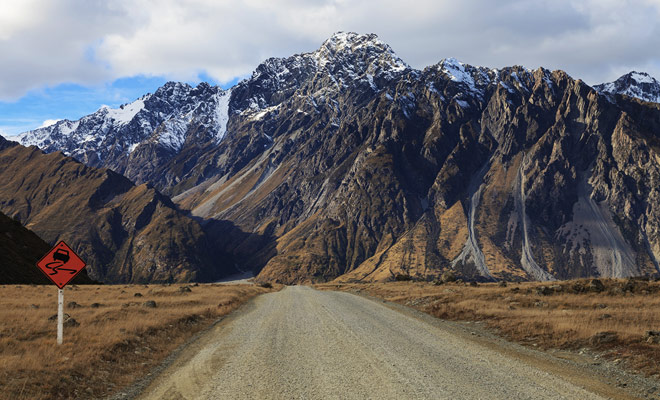
The gravel roads must be borrowed at low speed.
Then come the gravel roads, more or less well maintained, but impossible to circumvent to explore the hinterland or to realize the last kilometers before the beginning of a hike.
The side of the roads is less compacted by the repeated passage of vehicles, resulting in poor adhesion in corners, and a maximum speed that drops to 20 km / h only.
ROADS NOT RECOMMENDED
Some "roads" can’t be borrowed by rental vehicles for insurance matters. This is the case, for example, with the famous 90-mile beach which is not a road, but a beach on which you can drive to reach Cape Reinga at the northern tip of the country.
Each car rental company will specify the prohibited routes before giving you the keys of the vehicle, as well as the routes which are not prohibited, but not advised or dangerous in a motorhome.
Roundabouts in New Zealand.
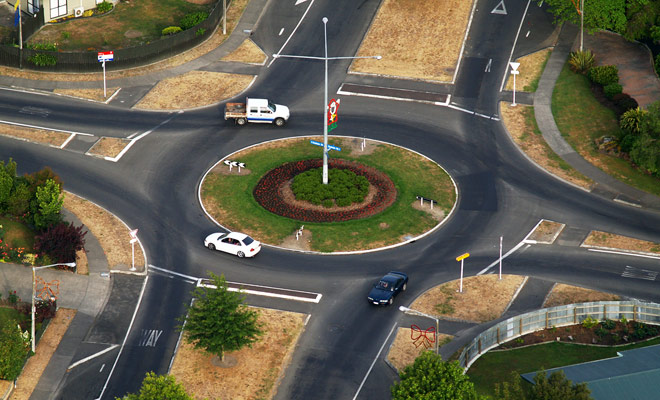
The presence of stops facilitates the use of roundabouts.
The New Zealand roundabouts are not frightening at all. In the vast majority of cases, each entrance has a “give way” sign post, and you just have to stop and wait your turn to insert your car while watching on your right.
Roundabouts are not difficult beacuse each entrant vehicle has to give way to the others.
Do not forget to put the flashings to indicate your intentions to the other drivers, and follow the marking on the ground while leaving the roundabout in order to stay on the left side of the road. Because in general, the beginners do not stay enough on the left, which has the effect of deporting the vehicle in the right lane.
It is enough to turn naturally to the left to avoid any problem ... No reason to be afraid!
Tolls in New Zealand.
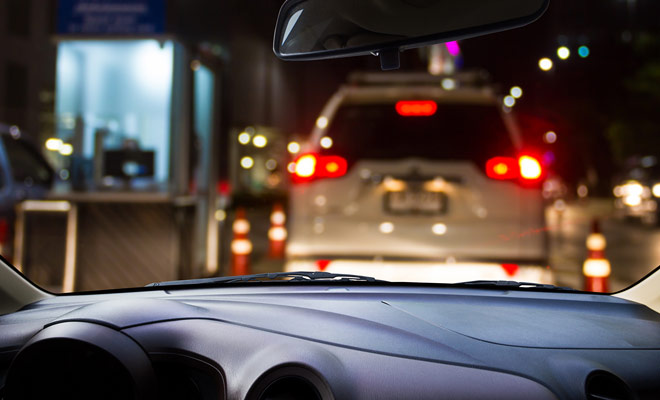
New Zealand has virtually no tolls.
The New Zealand taxpayer is not a cash cow, and the highways are not paying, with a few exceptions on the North Island. In any case, with most itineraries, you will probably not pay a penny.
If, however, your route crosses a toll, use cash to pay, instead of using your credit card (or you'll end up paying bank fees for these few dollars). That said, New Zealand's toll really does not cost much at all!
Here are the three tolls of the country, intended to finance the development of a region and not to enrich private companies ...
| Toll | Nearest City | Rate |
|---|---|---|
| Northern Gateway Toll Road | Auckland | $2,20 |
| Tauranga Eastern Link Toll Road | Tauranga | $2 |
| The Takitimu Drive Toll Road | Tauranga | $1,80 |
More information on tolls on the Official Transport Website.
Single Lane Bridges in New Zealand.

Single-lane bridges are common in the South.
With over 2,000 rivers in the country, you will often have the opportunity to borrow bridges, especially in the South Island.
A New Zealand specialty is the single-lane bridge, usually announced by a sign to give way and/or traffic lights.
Caution: Do not admire the landscape by crossing a narrow one-lane bridge, as you risk moving to the side, scratching the side of the vehicle.
Like anywhere in the world, it is, of course, forbidden to stop or park on a bridge, even to take a simple photo.
Level Crossings in New Zealand.

Although few in number, crossings are to be taken seriously.
The train as a public transport solution is almost dead in New Zealand, and only a few tourist lines are still active. But freight transport is well alive, and there are about 1500 level crossing in the country. A figure certainly weak compared to most European countries, but you'll encounter several during your stay.
Level crossings are quite rare, but they should not be crossed lightly.
The international rule applies, and you must not cross a railway line in the presence of a red light, even if no train is visible on the horizon. Drivers do not take the situation very seriously, but there are still 25 serious crashes a year ...
Car parks in New Zealand.
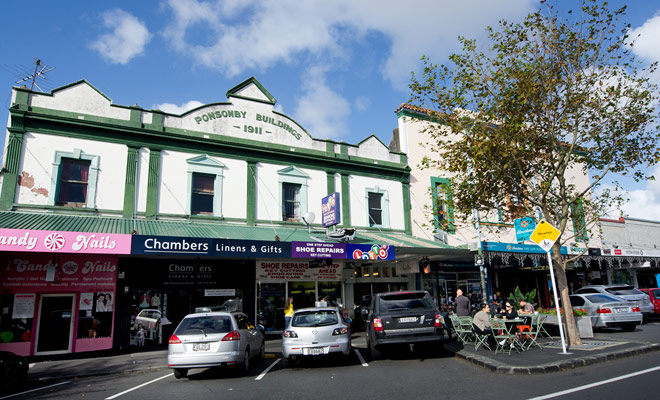
It is usually easy to park, but watch out for fines!
In New Zealand, you must park in the direction of traffic under penalty of fine, except, of course, if the road is one-way.
No surprise with parking meters and car parks which both accept credit cards or coins. But beware, because a “tow away” post sign indicates a car park reserved for a company or the clientele of a hotel.
In this case, parking is punishable by a fine of at least $300, not to mention the time lost recovering the vehicle at the pound (the next open day in general).
Left-Hand Driving for Beginners.

Kiwipal recommends renting a vehicle with an automatic gearbox.
It is, of course, possible to rent vehicles with a manual transmission, which implies moving the gears with the left hand ... A delicate exercise even if the position of the speeds does not change (first speed being at top left, and reverse position to unlock, etc.). This is enough to give cold sweats to beginners who tend to panic if they have never driven on the left side of the road!
I recommend renting a vehicle with an automatic transmission if you have never driven on the left side of the road.
In this case, the right foot will serve both to accelerate or slow down (the pedals are arranged in the same order as usual). You should fold up your left leg back, in order not to confuse the brake pedal with the missing clutch.
Why complicate your life during thousands of kilometers? Opting for the automatic transmission, allows to concentrate fully on the circulation without nervously scrutinizing the shift lever.
And if you have already driven automatic models, you will feel more comfortable from the first day on the road.
The Bad Reflexes to Avoid on the Road.
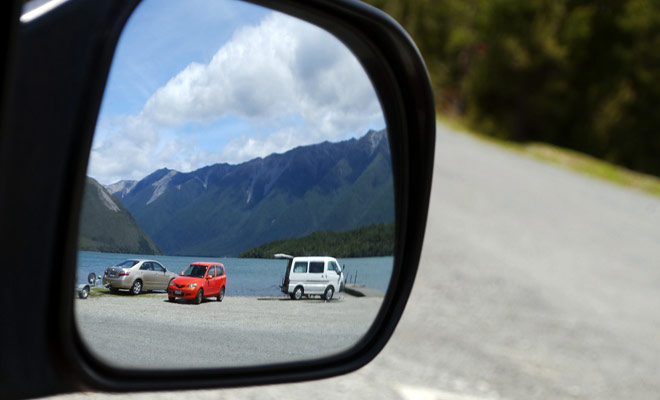
Ask the second passenger to monitor the mirrors.
You can spot the beginner who has never driven to the left when he inserts his car on the wrong side of the road when leaving a parking, or when he moves to the right when leaving roundabouts: two reflexes inherited from right-hand driving, but which fade after a few days, but can re-emerge anytime under stress conditions.
Hence the importance of having an effective co-pilot who can alert without frightening or annoying the driver.
Of course, the second passenger can give reassuring advice, but he must not give orders to the driver as a driving instructor would do!
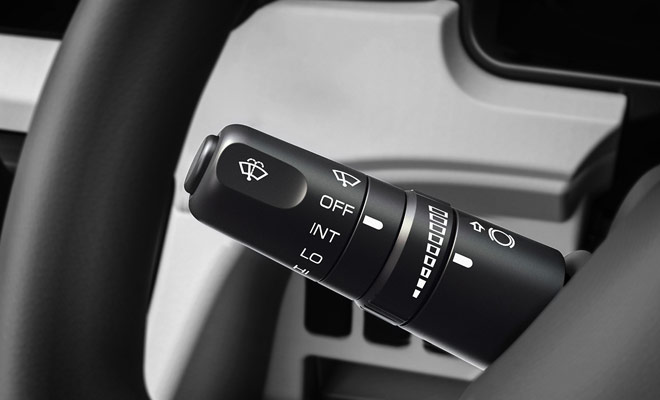
Do not confuse turn signals and windscreen wipers!
When driving, I invite you to regularly check your position using the side mirrors. Do not forget that drivers undertake by the right in New Zealand, and it is easy to block the traffic if you stay in the lane reserved for this purpose.
Because even after driving hundreds of kilometers in New Zealand, your conditioned reflexes can reappear in case of emergency, especially if you are driving on the right side of the road in your own country.
A typical example with the controls of the dashboard that are manipulated instinctively.
At the beginning of the stay, you will often confuse the wipers and turn signals, because the positions of theses commands are reversed!
Courtesy at the Wheel.

Respect speed limits, as the road is often winding.
The bad reputation of the Kiwis at the wheel is somewhat exaggerated and owes much to the fact that they are used to being alone on the road, and bear less the prudent travelers who do not drive to the left in their own country.
Therefore, if another vehicle follows you closely, I advise you to let it pass by taking advantage of the areas reserved for slow vehicles that are available at regular intervals.
It is precisely because the roads are narrow and the visibility reduced that the New Zealanders have arranged these spaces which facilitate overtaking without putting anyone in danger.
It's easy to get used to being alone on the road, and one is irritated more easily as soon as it is necessary to share the lane with another vehicle.
Nothing is more irritating than having to drive at low speed behind a heavy truck but you should never attempt to overtake if your visibility is poor.
And do not let yourself be distracted by the beauty of the landscape! A low or nonexistent traffic gives the feeling that you could park wherever you want, to take pictures on the side of the road. That's why so many tourists decide suddenly to brake, without first controlling the road behind them or the dead angles!
How to Plan Your Itinerary?

Do not forget to take into account the breaks to admire the landscape.
To plan your route in New Zealand, you need to estimate the time to spend on the road between each step. Two frequent mistakes consist in not taking into account the necessary breaks and in not allowing any extra time to improvise stopovers towards points of view discovered on the way.
The travel time in New Zealand is therefore easily underestimated, especially since the very marked relief (especially in the South Island) requires considerable detours.
A chain of mountains sometimes requires you to add 200 km to your trip, while the distance between two locations are only few kilometers away as the crow flies!
Kiwipal offers you realistic itineraries that take into account the breaks on the road.
Google Maps is a valuable ally to estimate distances, if you do not forget that this tool does not take the breaks or the weather into consideration, and gives estimations for an average speed of 90 km / h which is hard to maintain all the time in reality. Add to that the fact that you have to adopt a cautious left-hand drive, and you get a good margin of error.
I advise you to increase your time estimates by about 15% to be more realistic, or even 20% if you are traveling with children or under the rain.
Of course, for short distances without pauses, the estimates of Google Maps or the ones delivered by your GPS are quite reliable in general.
Do You Really Need a GPS in New Zealand?
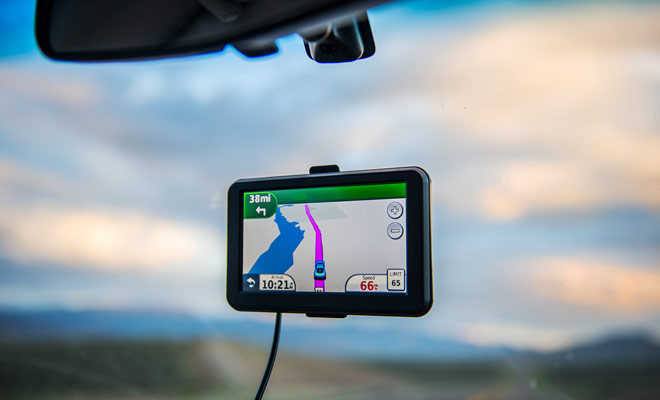
GPS is not essential, but it remains very useful in built-up areas.
Some people may tell you that GPS is useless in New Zealand, considering the simplicity of the road network.
And as most car rental companies provide road maps, you may be tempted to return to the old method that has proven itself.
However, I advise you to get a GPS to plan your itinerary more effectively. Because you are on holiday, and you have better things to do than handling an old paper map.
Even if you're traveling to a country where the next intersection is often 50 km away, you'll be happy to have voice guidance when you drive downtown or when you are looking for your hotel at dusk.
Should I Buy or Rent a GPS?
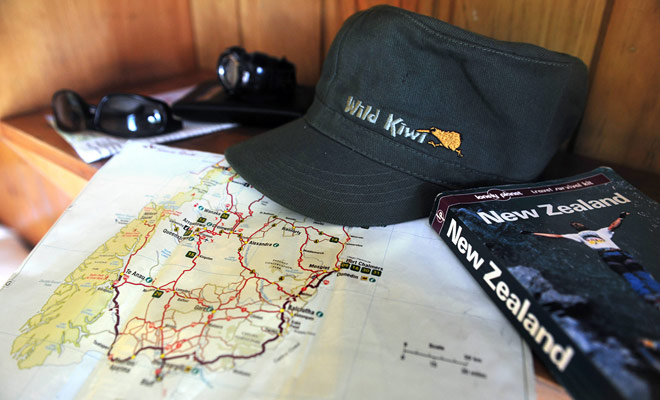
The road network is simple, but the GPS is better than a road map.
Do not rely too much on the GPS of your mobile phone, unless you can download the entire map of New Zealand in the memory, otherwise you will kill your data plan in the blink of an eye.
Of course, if you already own a GPS in your country, you could use it in New Zealand, because the cigarette lighter socket is compatible. But the problem of the navigation map remains!
A free map of the country exists and can be installed, but the quality is deplorable as it is not updated regularly and difficult to configure.
New Zealand maps are sold in options by most GPS manufacturers on the market.
GPS manufacturers like TomTom, Garmin ou Navigon sell additional maps where New Zealand is usually delivered with an Australian map.
Unfortunately, the price charged is scandalously high and almost identical to the price of a brand new GPS in New Zealand!
Another solution is to rent the GPS from the rental company for a few dollars a day. Alas! Depending on the duration of the trip, you might pay an amount equivalent to the purchase price of a new GPS! Therefore, I do not recommend this solution if the trip lasts more than two weeks.
If you do not have a GPS, I recommend you buy a cheap one in New Zealand (in any Auckland's mall for example) at around $100.
Attention, all car rental companies do not provide a road map of New Zealand, and if you plan to travel without GPS, you would be well advised to buy a map in advance. They are available on Internet for few dollars.
How to Manage Your Gasoline Budget?
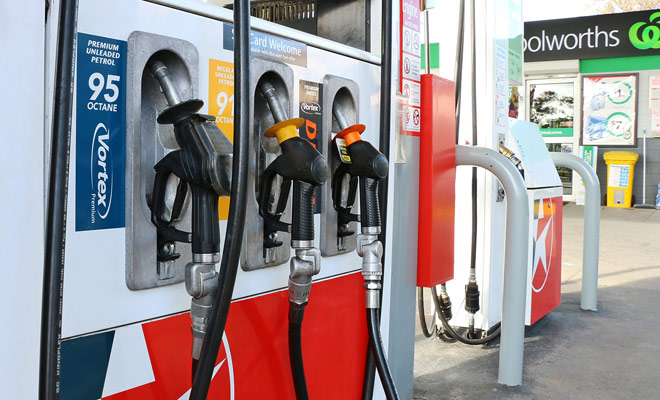
Do not overlook the gasoline budget when you prepare your trip.
New Zealand service stations operate like anywhere in the world, and you will pay for your fuel directly at the pump by credit card or to the station staff. It remains to know what type of fuel to choose and what budget to foresee.
In New Zealand, diesel is cheaper than gasoline (which is itself a bit cheaper than in Europe).
For the sake of simplicity, it can be said that the majority of cars (with the notable exception of 4x4s) run on gasoline, while the majority of motorhomes need on diesel. If you have any doubts at the pump, simply consult the vehicle manual, or look at the tank valve where the recommended fuel type is usually specified.
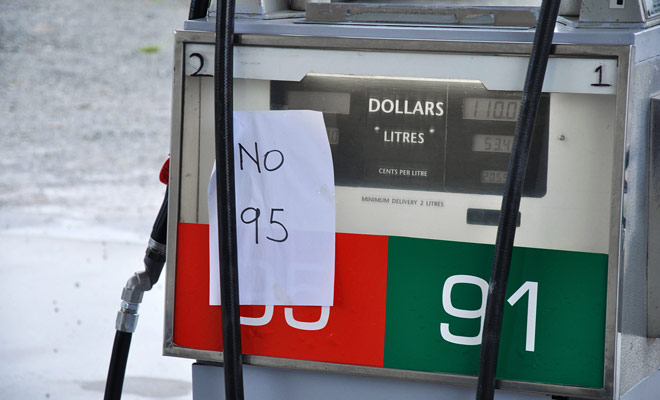
Fortunately, a gasoline-powered accepts any kind of octane.
You have the choice between octane 91, 95 and 98.
Each driver has his opinion on the best fuel, from the most economical to the most efficient, but on a short stay, the difference will be imperceptible.
Unless your rental company recommends or imposes a specific fuel, you can fill the tank with any type of unleaded-petrol, as long as your car does require diesel.
Ask the renter what type of fuel is recommended for the vehicle.
To calculate the fuel budget for the entire trip, just take into account the average fuel consumption for 100 kilometers, and to do a little rule of three with the average New Zealand's fuel price. You will find the price of gasoline and diesel updated on a daily basis on the “ Price Watch ” website. As for the consumption of the vehicle, it is sometimes indicated by the rental company or before booking in the Kiwipal comparator.
Where and When to Refuel?
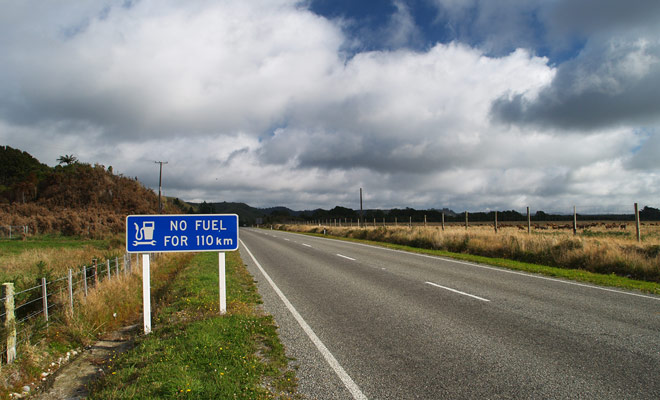
Never wait until the last minute to refuel.
I strongly advise against waiting for the tank meter to pass in the red to consider refueling. The gas station on which you count can be closed at the arrival, and if the next one is at 30 km (which often happens in the South Island), you might run out of fuel. Such a misfortune has already happened to me, and I assure you that when the rain begins to fall, you feel very lonely on the side of the road.
Never wait until the last minute to refuel, as some service stations can close without notice.
There are several large chain of service stations in New Zealand, the best known being Shell, BP, Caltex, Z, or Mobile.
But they are rare in sparsely populated regions, and a “last petrol stop” sign invites you to refuel when you still have the opportunity to do it before a long trip. You would not be the first to wait on the side of the road in despair...
Gasoline consumption is too often underestimated by people, without considering the importance of the mountainous terrain of the country.
A cheap automatic transmission often leads to greater fuel consumption than expected, and it is advisable not to rent a car at less than $30 a day.
The pump price increases in the very tourist areas (or very isolated ones), especially during the high season.
Radar and Fines in New Zealand.
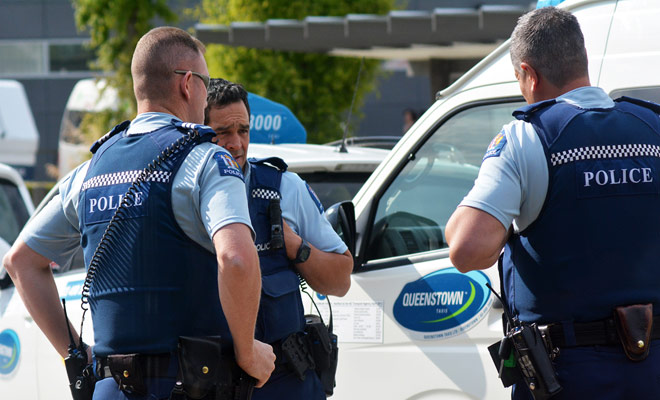
Traffic is low, but road checks are common.
The low traffic in New Zealand does not imply a lack of controls on the road, on the contrary! Fixed and mobile speed cameras are deployed all over the country, especially near tourist sites like Queenstown or Rotorua
You would not be the first traveler to bring back a fine as a souvenir of a stay in Kiwis land.
New Zealand takes road safety very seriously, and police enforce zero tolerance for impaired driving.
The permitted blood alcohol level is the same as in most European countries (0.5 mg), which is equivalent to two light beers ... And if the blood alcohol level explodes, the prison is not excluded.
The quantity of alcohol allowed is roughly the same as in Europe.
In any case, the seizure is, of course, possible, even abroad. It involves the end of the holidays if a second passenger is not able to drive.
Also note that if the vehicle is confiscated by the police, the car rental company will charge you several hundred dollars for the repatriation.
I think the message is clear. I will not insist on driving under the influence of narcotics, punishable by immediate expulsion accompanied by banishment, not to mention a fine or imprisonment.
Should I Pay my Fines?
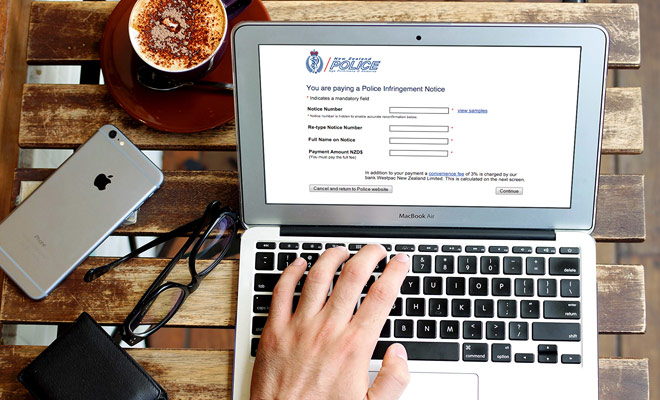
You can easily settle your fines over the Internet.
There is not a single week without a traveler asking Kiwipal how not to pay his fines.
In a country where traffic is low, many foreign drivers lose the sense of responsibility, and a fine for speeding on a deserted road seems scandalous to some people.
Do not count on me to take part in a debate about your fines for irregular parking!
On the other hand, I am the first to say that it is absolutely necessary to pay the fines for the following reasons:
- The amount of the fine will grow at the rate of $100 each time.
- The driver is liable to prosecution.
- The driver can be stopped at the airport on departure.
At the moment there are no bilateral agreements between most countries and New Zealand, but a driving license suspension might soon be voted as well as a withdrawal of license points. Finally, not paying fines helps to convey a negative image of your country abroad.
How to Pay My Fines?
To the extent you do not own the vehicle, the rental company will receive the fine and will communicate your address to the justice. The fine can be settled in a few minutes on the website of the New Zealand Ministry of Justice. It is also possible to pay the amount in any post office or Westpac banks.
The Essential Safety Rules.

Respect speed limits even if the roads are deserted.
I previously spoke of the risk of fines for speeding, which leads me naturally to address the safety considerations. Kiwipal is not here to preach, and the following advice is essentially meant to protect you from danger.
The first point I would like to emphasize is that you shouldn't drive in New Zealand during the first day of your trip.
Renting a car after a 24 hours’ long flight increases statistically the probabilities to be involved in a serious accident. The increasing number of car accidents caused by foreign tourists is such that a law could soon ban the rental within the 24 hours following arrival in New Zealand.
Do not drive for 24 hours after your arrival in New Zealand to reduce the risk of accidents.
Regardless of your driving skills, reflexes lessened by the fatigue of the flight (coupled with driving on the left if you are not used to it) multiply the risks of accidents.
It is better to spend your first day in New Zealand outside in parks while visiting the city to relax. Take time to breathe after being locked up for a whole day in a plane cabin!
Therefore, I recommend you to book a taxi or a shuttle at the airport to reach your hotel. Anyway, if your flight arrives in the evening, the car or camper van rental agencies will be closed ...

Rental agencies are present in airports.
Many travelers are stressed at the thought of having to drive (on the left, furthermore) the very next day. They expose themselves to a sleepless night when they know that they'll have to get up early to visit a rental agency and get their vehicle.
Under these conditions, it is more appropriate to set a more advanced appointment in the morning to be able to sleep in.
Finally, you should plan regular breaks on the road, at least one every two hours. With a multitude of magnificent landscapes, the opportunities to stop are not rare, and the picnic areas are very well laid out.
Driving With Children on Board.
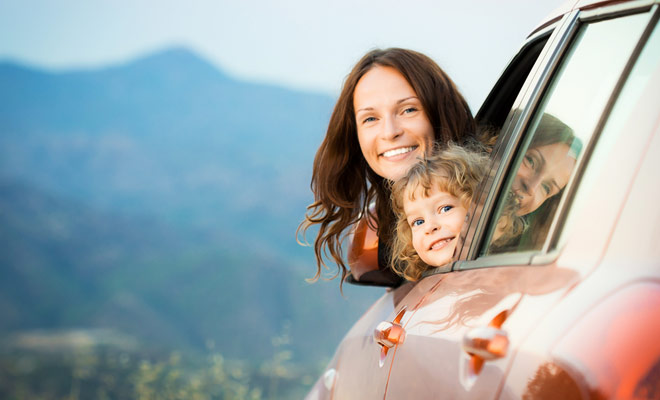
You can rent seats suitable for the age of your children.
Driving with children on board requires compliance with the New Zealand laws. Babies under six months of age must be seated in “capsule seat” when they travel by car or motorhome.
The child seat is made for children between 4 and 8 years old, and the booster seat is intended for children of 8 years and over (or at least until the child's height is inferior to 148 cm).
Beware, because if almost all rental companies offer child seats and boosters as options, the capsule seats are quite rare and you should perhaps consider bringing your own model in New Zealand, or even purchase one on site.
Of course, all these tips remain valid if you rent a motorhome.
Beware of Animals on the Road!
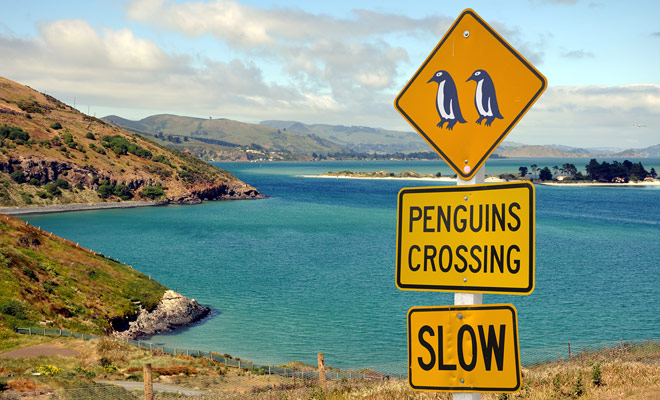
As fun as they are, the signs should be taken seriously.
In New Zealand, the show is often on the road, and the landscape is a true siren that charms you until you forget to monitor your driving. The risks of accidents are nevertheless real!
It is not because the road is mostly deserted that you risk nothing. The presence of many small crushed mammals on the road is a sad testimony of the surprise factor.
The risk of crushing an animal is even greater on the South Island.
The poor animal that throws itself under wheels won't change the trajectory of a vehicle running at 100 km/h, but it can lead the driver to brake abruptly or make a small gap, at the risk of surprising other drivers. Respecting the speed limits and being focused on the road signs is essential to reduce the risks.
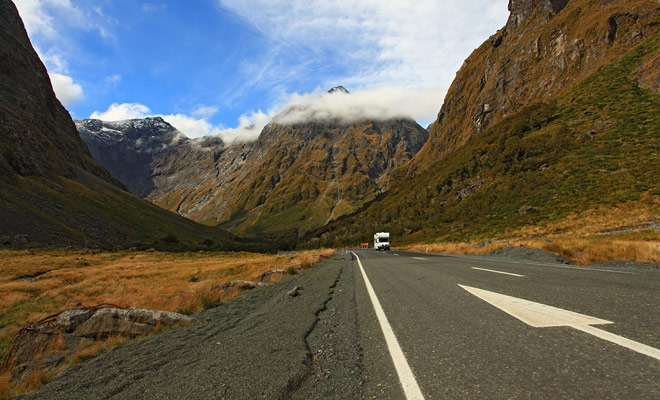
The beauty of the landscape should not distract you while driving.
Some roads are more dangerous than others, but they are not the least beautiful.
The Speed Highway 94 which leads to the Milford Sound is a perfect example, because even if it is considered to be one of the most beautiful roads in the world, it nevertheless holds the record number of serious accidents of New Zealand. Seduced by the gorgeous mountain landscapes, some drivers forget to watch the road in front of them.
Therefore, all the safety rules you observe in your own country are to be replicated in New Zealand, even if you believe you are alone on the road! To admire the landscape, one should always take the time to park and stay behind the safety barriers.
The SH94 is closed several days a year due to bad weather, black ice, falling trees or avalanches. There is even an official website to know the condition of the road at any time. If your cruise on the Milford Sound is canceled due to a road closure, you will be easily refunded.
How to Behave in Case of Accident?

In New Zealand you must contact the police in case of accident.
In New Zealand, it is customary to notify the police by telephone at 911 in the event of a road accident, then the vehicle rental company and the insurer.
The “Traffic crash report” form is usually found in the glove box of the vehicle, but one often forget to travel with a pen to be able to fill in the report ...
Do not neglect insurance issues, discussed in detail in our guides dedicated to car rentals or camper vans rentals.
May I remind that the hit-and-run offense, as well as trying to hide damages (even unintentional ones) deprives the driver of any subsequent compensation.
To be covered by your insurance policy, you must report the identities of each person involved in the accident. The police officer present can collect the various testimonies and certify them, which will speed up the procedure.
Keep your calm in all circumstances! Whether you are the victim or not, do not assume responsibility for the accident!
Stay neutral and leave the decision to your insurance that will process the claim and will contact the ACC (the organization that compensates the victims of accidents in New Zealand, even when they come from foreign countries).
Practical Tips Before Driving.

Driving on the left may require adaptation time.
Driving one the left side of the road does not go without some drawbacks, and you may confuse wipers and blinkers from time to time (including back home after your trip). I advise you to take your time after leaving the rental agency with your vehicle.
There is no shame to feel if you have never driven abroad in a car where the steering wheel is on the right!
It is better to specify it from the outset to the staff of the rental agency who will then be more understanding, and will spend more time explaining the vehicle's specificities.
Inspect the dashboard to familiarize yourself with the commands. The shift lever can have several levels even if the box is automatic, allowing you to select driving modes (sporty, economical ...) and if the vehicle leaflet can help, the ideal nevertheless is to ask your questions directly to the rental company.

Driving in town is more difficult after driving on deserted roads.
In any case, driving on the left does not present major difficulties, but it still takes a few days of practice to feel comfortable.
This is mainly city driving that can be stressful the first time, mostly because the traffic lights are located on the other side of the intersections and not where you stop as in many European countries.
As soon as the traffic becomes dense, the driver who has become accustomed to travel on roads where one crosses only one car every half hour is suddenly drowned in a flood of information.
Under these conditions, a red light is easily burnt, and it is better to take the time to park to analyze the situation, checking GPS or maps.
Only one master on board!
Driving on the left is facilitated by the presence of a co-driver who provides useful traffic information.
But the second passenger is not holding the steering wheel, and he should just give neutral information rather than orders.
In the same register, the other passengers should refrain from giving contradictory opinions, otherwise the driver may lose all his means. It is very easy to quarrel at the wheel when you are in a stressful situation, especially at the beginning of the journey.
How to Gain Confidence?
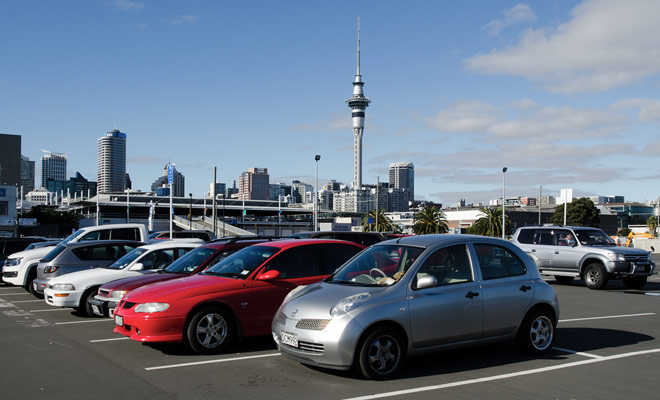
Take your time before you plunge into the traffic.
If the rental agency owns a car park, take the opportunity to familiarize yourself with the vehicle.
Once inserted into the flow, take your time, and without driving too slowly, give yourself enough time to analyze the road. Thereafter, nobody forbids you to go around a roundabout five times in a row if you are looking for the right direction ...
Try to drive smoothly, and you will gain confidence gradually.
If you are struck by uncertainty, you can always follow the movement of other cars, but do not do it blindly and make sure to watch the traffic lights!

Driving in New Zealand is above all a pleasure!
I advise you not to trust the GPS in town at the beginning of the stay, because it is better to focus all your attention on the road. Let your co-pilot monitor the route (or plan it well in advance using the Google Maps service) and take advantages of the red lights to analyze the situation.
Driving on the left is no big deal, and you have no reason to be worried.
As I said in the introduction, I will not drive for you in New Zealand, but I hope to have prepared and reassured you.
If you hesitate between the rental of a car or a motorhome, Kiwipal also offers free guides about each means of transport.
Finally, if you have not yet booked your vehicle, I suggest you consult our guides dedicated to the car rental or motorhome rental. And if you have any questions about driving or the Highway Code, I invite you to contact our friend Ben the Kiwi who will advise you effectively. I wish you a pleasant trip in New Zealand!


Questions & Answers.

What can I do for you? Driving to the left is easy, but may require a little adjustment time. If you have any questions or if I can reassure you, I am at your disposal!
- All topics ... 13 answers in total
- Driving in New Zealand 4 answers
- The International Driving License 3 answers
- Security 3 answers
- Which Kind of Vehicle to Choose 3 answers
Driving in New Zealand
- Is driving more difficult in the South or in the North?
It is often said that driving is more delicate in the South, but, in my opinion, there is no marked difference, New Zealand is a country full of hollows and bumps.
- How to estimate the distances between two destinations?
You can use Google Maps or the Automobile Association Distance Calculator which is more accurate.AA Travel Calculateur de distance
- How to know the state of the roads?
There is a website that informs you on the state of the roads, and that is essential if you do not have a GPS with a map updated in real time.New Zealand Traffic
- What is the quality of roads in New Zealand?
New Zealand is a very modern country, and its road network is very well maintained, at least as far as speed highways (SH) are concerned.
The International Driving License
- Is the international driver's license payable?
It is free, but you will probably have to pay the post fees the photos.
- Can my spouse drive as well?
Yes, but if you don't come from an English-speaking country, she also needs an international driver's license. Some vehicle rental companies charge the extra driver, others do not.
- What are the formalities for obtaining an international license?
You will find all the steps, and the list of documents to be provided on the government sites.International Driving License delivered in FranceInternational Driving License delivered in BelgiumInternational Driving License delivered in Switzerland
Security
- I rarely drive, can I rent a car?
Yes, as long as your license is valid. I advise you, however, to take some driving lessons to put your reflexes in place before departure if you have not driven for a long time.
- Why are there so many road kills on the road?
The road kills are quite numerous (especially in the south) because traffic is very low and the animals are not used to cars. But the real reason lies in the fact that the possum is a small marsupial accused of destroying the ecosystem. New Zealanders sometimes crush him voluntarily. Read the Kiwipal guide dedicated to the animal species of the country to understand the problem before making yourself an opinion.
- Does the car theft exist in New Zealand?
Yes, and it is one of the most frequent offenses in a country whose crime is one of the lowest in the world. Do not let your stuff visible in the car when you go hiking.
Which Kind of Vehicle to Choose
- Should I buy a vehicle?
This is a question you should ask yourself only if your stay exceeds three months, for example as part of a Work Holiday Visa. But do not forget that it will be necessary to resell the vehicle before the departure, which is not easy.
- Should we choose a car or a motorhome?
These are two very different travel styles with advantages and disadvantages. I suggest you take the time to read the two guides dedicated to the question on Kiwipal before making your choice.
- Is it difficult to drive with a manual gearbox?
Yes, because it is necessary to pass the speeds with the left hand, and some people are incapable to do it without an exhausting intellectual effort.

